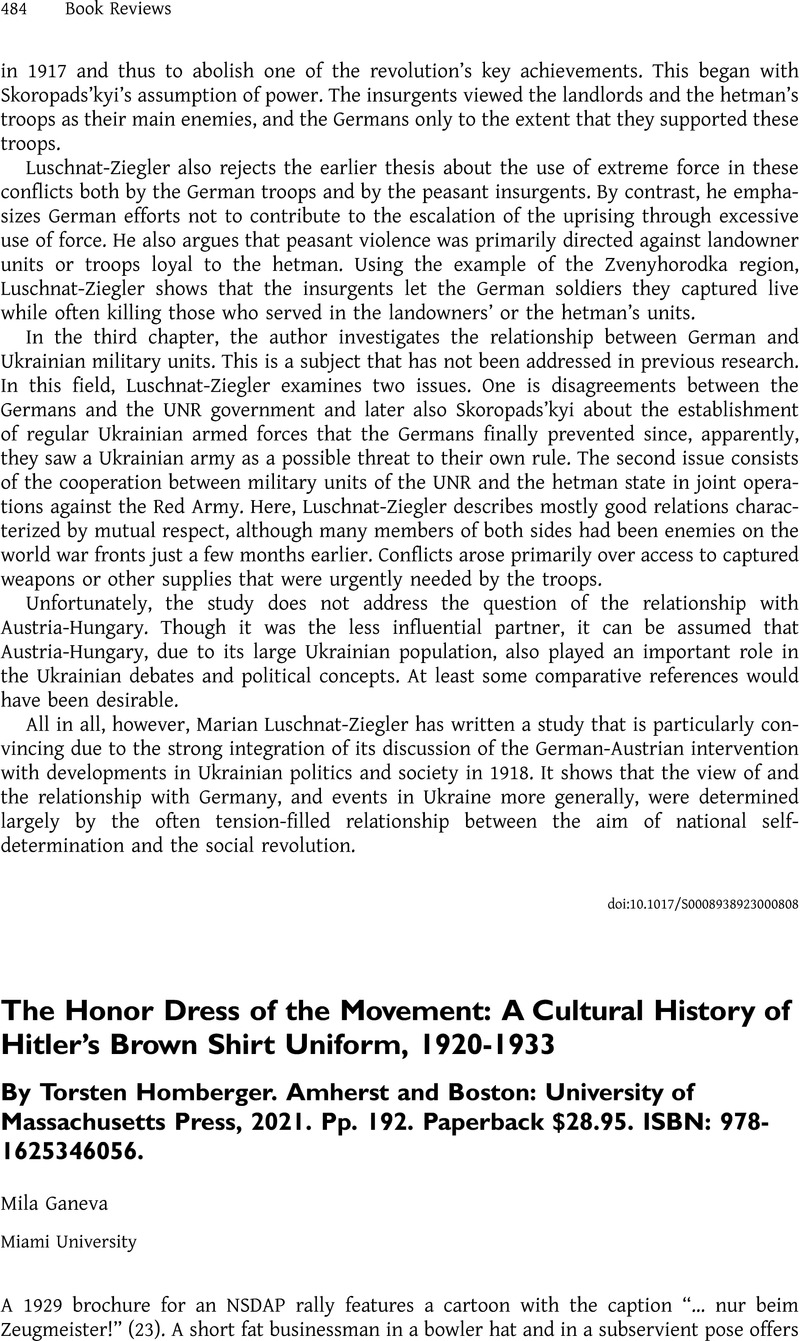No CrossRef data available.
Article contents
The Honor Dress of the Movement: A Cultural History of Hitler's Brown Shirt Uniform, 1920-1933 By Torsten Homberger. Amherst and Boston: University of Massachusetts Press, 2021. Pp. 192. Paperback $28.95. ISBN: 978-1625346056.
Review products
The Honor Dress of the Movement: A Cultural History of Hitler's Brown Shirt Uniform, 1920-1933 By Torsten Homberger. Amherst and Boston: University of Massachusetts Press, 2021. Pp. 192. Paperback $28.95. ISBN: 978-1625346056.
Published online by Cambridge University Press: 08 November 2023
Abstract
An abstract is not available for this content so a preview has been provided. Please use the Get access link above for information on how to access this content.

- Type
- Book Review
- Information
- Copyright
- Copyright © The Author(s), 2023. Published by Cambridge University Press on behalf of Central European History Society of the American Historical Association


